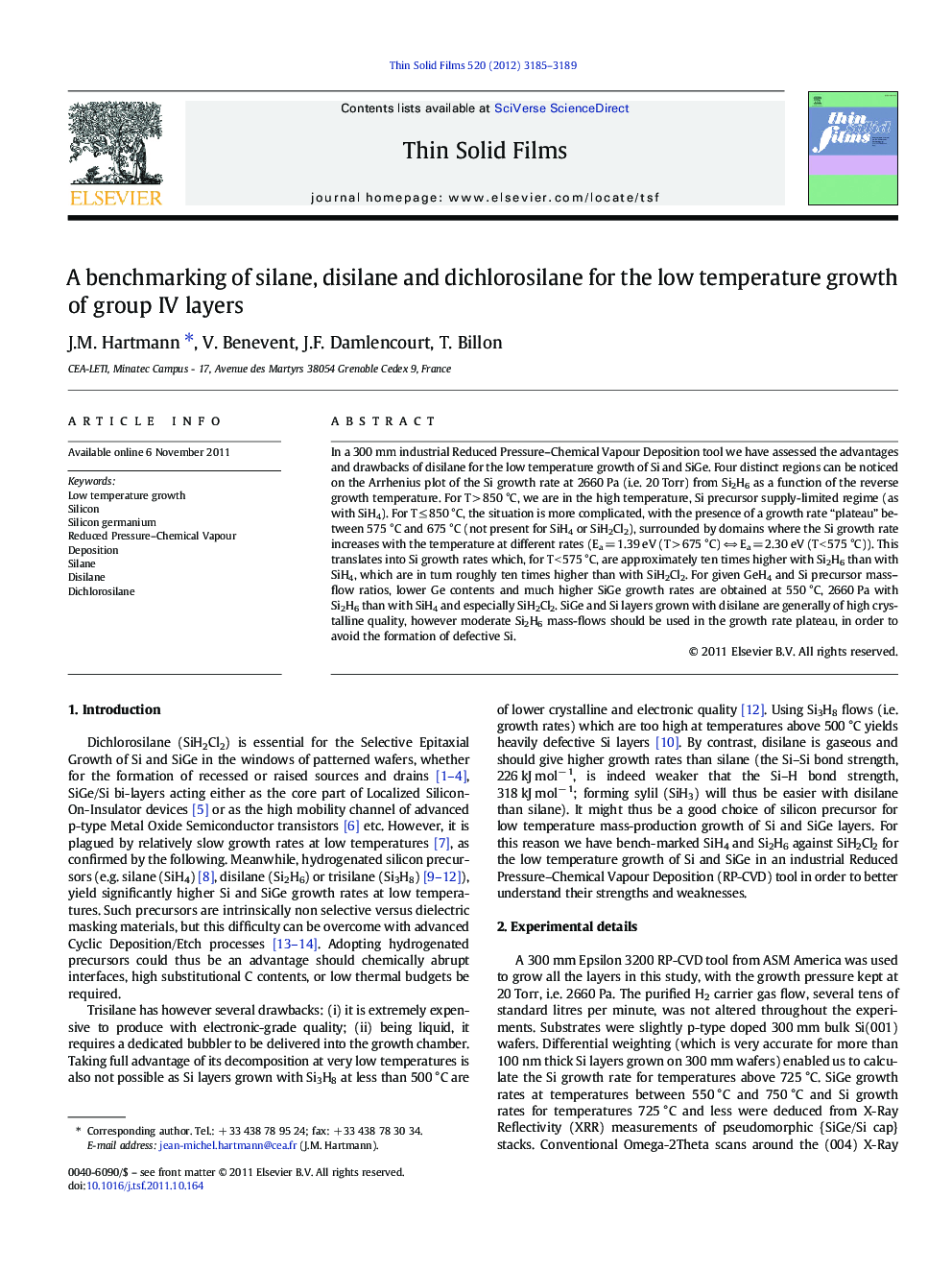| کد مقاله | کد نشریه | سال انتشار | مقاله انگلیسی | نسخه تمام متن |
|---|---|---|---|---|
| 1667516 | 1008852 | 2012 | 5 صفحه PDF | دانلود رایگان |

In a 300 mm industrial Reduced Pressure–Chemical Vapour Deposition tool we have assessed the advantages and drawbacks of disilane for the low temperature growth of Si and SiGe. Four distinct regions can be noticed on the Arrhenius plot of the Si growth rate at 2660 Pa (i.e. 20 Torr) from Si2H6 as a function of the reverse growth temperature. For T > 850 °C, we are in the high temperature, Si precursor supply-limited regime (as with SiH4). For T ≤ 850 °C, the situation is more complicated, with the presence of a growth rate “plateau” between 575 °C and 675 °C (not present for SiH4 or SiH2Cl2), surrounded by domains where the Si growth rate increases with the temperature at different rates (Ea = 1.39 eV (T > 675 °C) ⇔ Ea = 2.30 eV (T < 575 °C)). This translates into Si growth rates which, for T < 575 °C, are approximately ten times higher with Si2H6 than with SiH4, which are in turn roughly ten times higher than with SiH2Cl2. For given GeH4 and Si precursor mass–flow ratios, lower Ge contents and much higher SiGe growth rates are obtained at 550 °C, 2660 Pa with Si2H6 than with SiH4 and especially SiH2Cl2. SiGe and Si layers grown with disilane are generally of high crystalline quality, however moderate Si2H6 mass-flows should be used in the growth rate plateau, in order to avoid the formation of defective Si.
Journal: Thin Solid Films - Volume 520, Issue 8, 1 February 2012, Pages 3185–3189